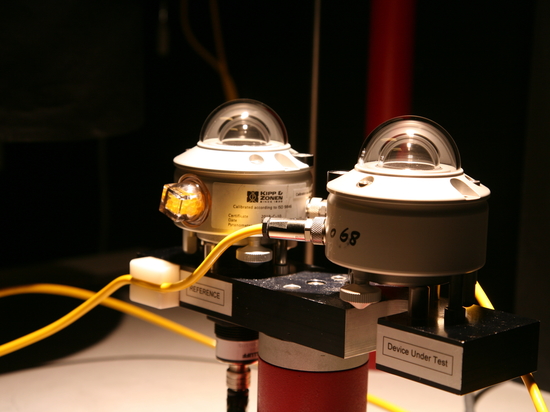
#White Papers
Hot Topics in Monitoring Solar Irradiance
We have a lot of contacts with existing and prospective customers in the solar energy industry; at exhibitions, in workshops or by email and through the Kipp & Zonen support system.
Many of the same issues keep coming up, in one form or another.
So, we have decided to put together a whitepaper that addresses the most common requests for information and explanation. This is particularly topical because there is a lot of confusion resulting from recent changes in key international standards.
The whitepaper starts by explaining what is meant by solar radiation and its properties and how the various components arriving at the earth’s surface are related and affected by the atmosphere and sky conditions.
The ISO 9060 standard
ISO 9060 is titled “Solar energy – Specification and classification of instruments for measuring hemispherical solar and direct solar radiation”. It defines what a pyranometer is for measuring global horizontal or tilted irradiance (GHI and GTI) and, when shaded, diffuse horizontal irradiance (DHI). It also defines what is a pyrheliometer for measuring direct normal irradiance (DNI). For most PV applications the plane of array (POA) irradiance is the most important parameter.
This standard has been around since 1990 and many people in solar energy are familiar with the performance classifications of Second Class, First Class and Secondary Standard pyranometers, in order of improving measurement performance. The whitepaper explains why the specifications could only be met by thermoelectric detectors, typically a thermopile with a black absorptive coating and a glass dome.
Measuring solar irradiance
This has all changed with the updated ISO 9060 published in November 2018. The new ‘pyranometer’ classifications are C, B and A and these allow for photoelectric detectors with a limited and uneven spectral response. A well-designed thermopile pyranometer is now described as ‘spectrally flat’ class C, B or A; and there is another sub-category for ‘fast response’ instruments. In addition, Class A units must be individually tested to check that they meet the temperature and direction (cosine) response limits.
And the IEC 61274-1 standard
To further complicate matters, there is IEC 61274-1 published in March 2017; Photovoltaic system performance – Part 1: Monitoring. This standard has three classes of monitoring for all types of PV solar power plants from basic (C) through medium (B) to high accuracy (A). However, it refers to the original ISO 9060:1990 pyranometer classifications.
An ISO 9060:2018 Class A pyranometer does not necessarily meet the Class A monitoring requirements of IEC 61724 and there are a lot of other implications, for example in maintenance costs. Our whitepaper guides you through these complexities and another much misunderstood topic, pyranometer measurement uncertainty. Related to this is soiling monitoring and what you can do to keep the optical domes and windows clean.
A section is devoted to the importance of accurately monitoring solar irradiance in all the phases of utility-scale solar power projects; from site prospecting to plant design, installation and commissioning, operation and maintenance. There is an explanation of the benefits of high quality irradiance data to quantifying performance ratios.
Download the whitepaper to learn more
The whitepaper concludes with examples of solar energy projects around the world that rely upon Kipp & Zonen solar radiation monitoring equipment.






